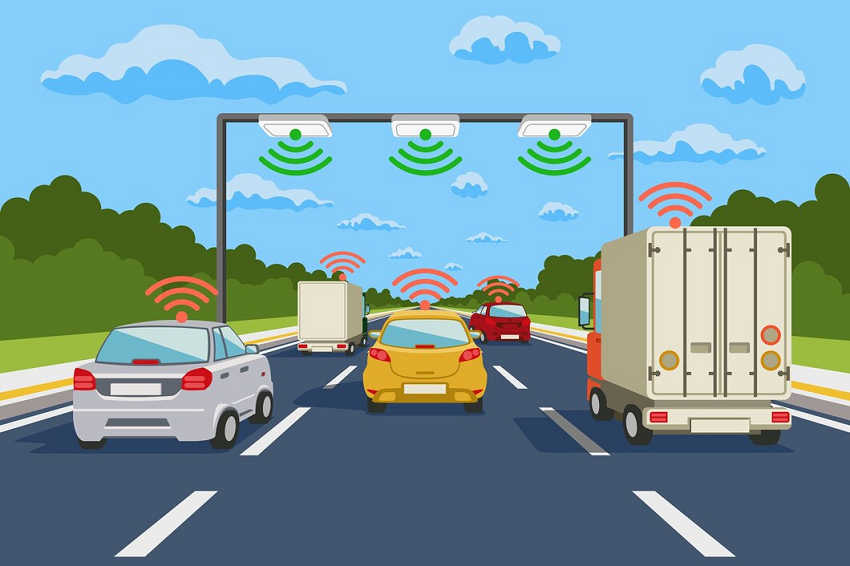Self-driving automobiles are changing the way people travel, and estimates indicate that as many as one out of every ten cars could be self-driven by 2030. This number is sobering, but it also speaks to the momentum in autonomous vehicles that could transform our view of mobility. With the development of these vehicles moving forward rapidly, the implications for safety, efficiency, and accessibility could be enormous heralding a new age in transportation.
In this blog, let’s understand what autonomous is and the technology behind the scenes of Autonomous vehicles. We dig deep into what they bring to the table from lowering road accidents to improved ecological sustainability. Still, the path to broad implementation faces numerous obstacles from both technical and ethical/legal perspectives.
We’ll also explore where the industry stands today, who are some of the key leading players, and what is up next in our transportation future with autonomous. Lastly, this blog will give you a complete idea of how autonomous vehicles are empowered to change the nature of transportation forever as well as change our cities and city movement.

What Are Autonomous Vehicles?
Self-driving cars, also known as autonomous vehicles, are our land-based version of drones that transport people. These levels of automation refer to a spectrum and have five categories ranging from none to full. The human is the driver of this vehicle. Automated systems like adaptive cruise control and lane-keeping assistance fall into Levels 1, and 2 (some levels in development).
At this level, the car can perform most of the driving tasks but you may still need to suddenly take over (e.g. it has full self-driving capabilities). Level 5 — Full automation, in which the vehicle can handle all tasks involved with driving and does not require any human input at any time.
Autonomous vehicles use a special recipe of advanced systems for their technology. To interpret data collected by the various sensors detecting the environment (LiDAR, radar cameras, etc.) including road signs or pedestrians, other approaches such as artificial intelligence are used centrally. With location data from GPS and mapping features, the vehicle has information on its exact whereabouts allowing it to map out more complex routes.
By interpreting large amounts of driving data, machine learning algorithms continually enhance the ability to decide what action your vehicle will take next. Armed with these two technologies, AVs can behave as humans behind the wheel — but safer and more efficiently bringing about a revolutionary transformation in transportation.
A Brief History of Driverless Cars
Science fiction to fact – The long journey of autonomous vehicles (AVs) Self-driving cars have been a vision since the early 20th century, but rapid development did not start until both necessity and transistors could be found for cheap enough in the latter half of the last century. The first large-scale self-driving vehicle attempt was the Navlab project at Carnegie Mellon University in the 1980s, funded by DARPA. It served as an early foundation for the project and introduced a variety of robotic vehicles.
The 1990s saw notable advances, with German engineer Ernst Dickmanns retrofitting a Mercedes-Benz to autonomously drive along highways using cameras and other sensors. That accomplishment was then quickly backed up with the original DARPA Grand Challenge in 2004 where a vehicle safely completed an early-course version of what we now call total autonomous driving.
Although none of the biggest work, it presented the possibilities for AV and spurred further studies. Other major waypoints lined the route of development, one being in 2007 when Stanford entered a Volkswagen T5 van into the DARPA Urban Challenge this event required an autonomous vehicle to negotiate everything from road signs and vehicles through city streets; demonstrating just how close we are to having fully automated driving everywhere on our highways.
During the 2010s, companies like Google (now Waymo) started testing self-driving cars on public roads and showing that autonomous vehicles could actually work in real conditions. The 2015 debut of Autopilot by Tesla conveyed semi-autonomous driving into the arena of consumer cars, while also demonstrating just how far commercial-grade capabilities and technologies could be brought closer to reality.
Autonomous vehicles remain an evolving field of technology today, with companies like Waymo and Uber along with traditional car manufacturers investing millions to perfect the system and bring fully autonomous cars one step closer toward mainstream adoption.
Autonomy Development Timeline
- 1980s: The Navlab project by Carnegie Mellon was the first practical AV development.
- 1990s: Autonomous highway driving was achieved by Ernst Dickmanns’ research at Mercedes-Benz.
- 2004: The first DARPA Grand Challenge » Demonstrating the possibilities for autonomous vehicles.
- 2007: DARPA Urban Challenge (AVs in an urban environment).
- 2010s: Google Waymo and Tesla Autopilot autonomous vehicles on public roads/consumer market.
Advantages of Autonomous Vehicles
Safety
By taking humans out of the equation, autonomous vehicles stand to avert up to 94% of traffic accidents which are primarily due to human error. The sensors, cameras, and AI run their decision-making process much quicker as we all know most advanced autonomous automobile systems are faster than human decisions. This provides the foundation allowing AVs to eliminate distractions, fatigue, and impaired driving ensuring a safer environment for all road users. The dream is that AVs of the future will reduce crash rates and save lives as technology improves.
Efficiency
By allowing autonomous vehicles to implement optimized driving patterns, traffic flow, and congestion can be greatly improved. AVs can talk to each other and perform synchronized maneuvers that eliminate stop-and-go traffic and stabilize flows of vehicles, something human drivers are incapable of. This allows smooth operations of traffic and keeps away from causing gridlock, resulting in reduced time for travel. Furthermore, by being more efficient in routing and driving styles, AVs can decrease fuel consumption which would lead to overall cleaner transportation.
Accessibility
These cars point to what could become of the automobile, offering improved access for people who cannot drive in a traditional sense. This population often includes citizens with disabilities, the elderly, and patients who are not medically approved to drive – AVs provide a new level of independence. These cars, vans, and buses offer an element of freedom in a world where some lack the ability to move about as freely.
Environmental Impact
Autonomous cars can play a crucial role in making the environment green. AVs can reduce greenhouse gas emissions by optimizing driving patterns and reducing idle times thereby saving on fuel. What is more, the environmental impact could be even greater through a bigger uptake of electric autonomous vehicles and therefore lower demand for fossil fuels. This would also then have the potential to decrease traffic congestion and lower emissions due to more efficient use of shared autonomous vehicles.
Challenges and Concerns
Here is a series of predicaments and factors that need to be tackled, in order for autonomous vehicles (AV) like those cruising around Las Vegas these obstacles run the gamut from technological to ethical, legal, and economic almost all formidable challenges that demand considerable reflection towards hitherto unseen solutions.
Technical Challenges
Technical challenges and infrastructure requirements done correctly (i.e. accurate sensors and decision-making algorithms) are some of the most imminent obstacles in creating self-driving vehicles- workflows that currently are redefined by autonomy developments.
These autonomous vehicles use an array of cameras, LiDAR (Laser detection and ranging), Radar, and Ultrasonic sensors in order to perceive the world around them. But under harsh weather conditions like heavy rain or fog, these sensors can fail as it blocks vision and reduces the accuracy of sensor readings.
Furthermore, AVs should be able to navigate through more complex areas like crowded city streets where you might encounter unexpected objects or confusing situations. Being able to understand these situations well enough, that the decision-making algorithms of other systems have time to make real-time decisions whilst remaining safe is still an enormous challenge.
Ethical and Legal Issues
Self-driving cars cause huge ethical and legal problems. Whether autonomous cars buckle passengers for damage in an accident has been one of the most hotly contested issues to date. One of the main contentions around autonomous vehicles is who takes responsibility in a crash, should it be down to the manufacturer, software dev, or passenger if at all. This ambiguity has sparked a desire for brand new saltatory habits that may discover who must be held responsible in those instances.
Ethical dilemmas are also triggered when it comes to the choice of two evils, for instance, mowing down a pedestrian or turning into oncoming traffic. The developers of these vehicles have to deal with setting up their cars properly, according to moral beliefs held by society, which offers a problem that is both technical and ethical.
A major concern is also privacy with respect to the data. Self-driving cars generate and consume massive amounts of data, often sensitive information about where passengers go throughout the day. Keeping this data secure so that no one else can gain access to it and compromise passengers’ privacy is probably the biggest challenge for any prospective developer or regulator.
Economic Impact
The broader deployment of autonomous vehicles could also have substantial economic implications, particularly for industries that heavily depend on human drivers (such as trucking and taxi services).
Potentially, AVs can be an alternative to humans which we currently employ as drivers and this raises the issue of “another kind” or robotization in the transportation sector that may cause at least partial unemployment.
Alternatively, the rise of AVs could lead to new jobs in software development and data analysis as well as vehicle service. However the changeover could be disruptive, and its economic impacts must be carefully managed to reduce harm to workers and communities.
Current State of Autonomous Vehicles
The autonomous vehicle industry is currently in a race to develop new technology and secure widespread adoption, amidst rapid progress but significant investment and emergent regulation. Several companies have been working to develop and deploy AV technology, which ranges in their degree of autonomy.
Industry Leaders
- Tesla: Tesla is a leader in adding autonomous driving features to its consumer vehicles with the Autopilot and Full Self-Driving (FSD) systems. At the 3.0 conference on Wednesday, Musk revealed plans to introduce silence Level 5 Capability for Tesla vehicles in three or so years, depending on regulatory approval.
- Waymo: The autonomous vehicle developer for Alphabet Inc. and generally viewed as an industry leader Waymo has already done a ton of public-road testing with these vehicles and even launched an autonomous taxi service in limited commercial (fare-deserved) operation in Phoenix, Arizona.
- Uber: Uber has greatly reduced its AV ambitions, but it still looms large in the space outside of building tech and developing everything on their manufacturing side.
Regulatory Landscape
The regulatory framework around autonomous vehicles will continue to mature. Various countries and regions are taking different regulatory approaches to AVs. For instance, in the US regulation is largely in state-level hands, which means a hodgepodge of rules and guidelines. Whereas states such as California have strict testing requirements, others are significantly less stringent. While the U.S. Department of Transportation has issued guidelines at a federal level, there is no complete legislation in place just yet. In Europe, the regulatory attitude is somewhat more circumspect about safety and data privacy.
Real-World Applications
We are well on our way to diversified real-world use cases deployed and tested for autonomous vehicles. Others simultaneously announced pilot programs in cities like Phoenix and Las Vegas, for autonomous shuttles and taxis as well. Transport deliveries increasingly focus on the last mile of delivery using autonomous delivery services as focused by companies like Nuro. Road tests can have personal vehicles equipped with advanced driver-assistance systems, such as Tesla’s; it is this technology that appears to bring partial self-driving within the reach of everyday roadgoing driving.
What Next for Self-Driving Cars?
Introduction Autonomous vehicles (AVs) have the potential to transform the transportation landscape, and in doing so may significantly impact society on urban planning as well as global mobility.
While technology evolves, it’s important to keep in mind what direction the industry is heading toward new innovations that could emerge and how long we may need until widespread adoption takes place.
Further, much will hinge on what part AVs have in urban planning and infrastructure and how globally ripe the technology is.
Predictions and Trends
The most obvious prediction is that these transporters could lash on to practically everything from serving as personal transportation machines or form part of a logistic and public transit systems. So, automation at Level 2 or even the almost fully autonomous Level 3 are some of what we have today, as technology improves you should see more advanced stages to totally automated vehicles free at Level 5.
Key Trends and Innovations:
Better AI and Machine Learning:
As autonomous vehicles rely heavily on the concepts of artificial intelligence (AI) and machine learning, their capabilities will continue to improve. They will start better handling the complexities of driving and making safer decisions as technology progresses, especially when it comes to learning from new data. This will allow AVs to operate more consistently across a greater diversity of driving conditions.
V2X Communication:
Spawning of Connectivity Vehicle to everything communication is an indispensable part of the Autonomous Ecosystem. The technology enables AVs to communicate with other vehicles, infrastructure, and even pedestrians for increased safety and efficiency. The wider availability of V2X technology will make real-time data exchange possible, and AVs will be able to anticipate and respond more efficiently to traffic conditions as well as accidents that occur on the streets or roads.
Point-To-Point Goods Delivery:
This trend will see goods getting easily from one point to the other without involving human drivers. Shared autonomous mobility trend expected in the future and an insight into emerging trends.
Waymo offers a good example, as do uber and other companies that are experimenting with driving-autonomous ride-sharing services for the first time, which can help reduce total passenger vehicles not to mention make transportation cheaper or less congested in urban areas.
The move away from personal car ownership, supported by broader trends in a sharing economy demonstrates the potential for shifts and disruptions within this space of urban transportation.
Energy Efficiency and Clean Energy
With the push from around the world for clean energy alternatives, there will be more electric powertrains deployed in autonomous cars. Electric AVs have environmental advantages too, as emissions are significantly cut and operating costs are lower—and this will be pivotal for cities addressing climate change and air pollution.
Estimates for Global Adoption:
Mid-Term (2025-2030) In the next five years, we should see higher penetrations of AVs in restricted environments like university campuses, industrial/commercial compounds, and even dedicated urban routes. Higher level 4 autonomy, where vehicles can operate without any human intervention in specific conditions (like the ones listed above), will likely proliferate further, especially for ridesharing and delivery services.
Mid-Term (2030-2040) The 2031s The Next multiple years, Years improved upon and got later to new mid-term autonomous vehicles should start being used in some urban areas and we could actually see the first truly Level 5 capable vehicle available for private/commercial use. But that would rely on major improvements in technology, infrastructure, and regulation.
The Long View (2040 and beyond): In the long term, autonomous vehicles will be more or less universal. That could result in a seismic change to the way both people and goods are ferried about, with AVs becoming part of nearly every mode of transportation from travel out for fun all the way down to getting your packages via FedEx.
Impact on Urban Planning
Aspiring to drive the rise of autonomous vehicles will require a great deal of change in urban planning and infrastructure. AVs will require cities to make changes, thus potentially causing a change in not only transportation networks but also land use and how the public realm is designed.
Changes in Infrastructure:
Smart Roads and Highways:
In order to fully support autonomous vehicles, cities might have to make a considerable investment in smart infrastructure, such as developing roads that are equipped with sensors (both short- & long-range), and cameras including V2X communications systems. Smart roads would provide AVs with data in real-time, potentially helping vehicles more quickly and safely navigate intersections. For example, highways can be reconfigured with specially demarcated lanes dedicated to autonomous vehicle traffic flow in an effort to improve issues of congestion and reduce the probability of vehicular accidents.
Revitalized Parking Facilities:
Near-term parking impacts are less likely, but eventually, dwindling traditional parking space needs may lead us to rethink how we manage these spaces. It refers to the possibility of converting parking facilities into other uses such as parks, businesses, or housing sites. Some parking lots could be converted to multi-purpose stations for AV pick-up and drop-off of passengers or goods.
Transit Hubs and Mobility as a Service (MaaS):
Autonomous vehicles combined with transportation will lead to the creation of primary transit hubs where AVs, Buses, Trains, and bikes all meet in one place. These could also be hubs around which Mobility-as-a-Service (MaaS) platforms operate, enabling users to easily switch from one form of transportation to another.
Reimagining Urban Spaces:
Less Traffic and Cleaner Air:
If AVs optimize traffic flows better, we could see a decrease in congestion on city streets possibly leading to cleaner air too. More livable urban environments with less traffic, noise, and pollution.
Pedestrian-Friendly Environments:
There could be fewer vehicles and better traffic management so cities might structure to become more pedestrian-friendly. Meanwhile, streets would be made over for extra walking and cycling space with bigger sidewalks, bike lanes, and car-free zones in abundance.
Flexible land use:
Autonomous cars could allow more flexible city zoning. This same technology can be used to reduce some of the unsolved challenges in cities such as urban sprawl and housing difficulties by redirecting unused parking or unnecessary wide roads for new building activities like houses, parks, and commercial buildings.
Global Perspective
Autonomous vehicles will probably affect all these countries, but the rate of adoption is likely to be very different between regions with varying degrees of economic development and regulatory environments as well as fundamentally diverging attitudes towards technology.
Embracing the Shift:
The U.S. and Canada: North America has been the nexus of autonomous vehicle development, home to front-runners such as Tesla, Waymo (Alphabet), and Uber. In the U.S. and Canada, relatively friendly regulation will likely lead to ongoing investment in AV technology with bikes remaining a marginal interest for policymakers unless they really start piling up on porches (or playgrounds). However, the rollout could happen at a slower pace depending on state or province regulations and infrastructure readiness.
Europe: Europe has erred on the side of caution, focusing largely on safety and data privacy issues surrounding driverless cars. However, the European Union is working to create an all-encompassing rule set that would lead AVs down safer pathways at a slower pace but with stronger specifications. Germany, the UK, and The Netherlands are among the countries investing in AV research and cutting-edge testing of integrating AVs with public transit systems or freight logistics.
Autonomous vehicles are also gaining attention in Asia with China, Japan, and South Korea making huge commitments to this field. China in particular has been making rapid strides because of government backing and a massive domestic market. Baidu and Alibaba are just two of the Chinese companies working on AV technology, while China as a whole seeks to become a worldwide leader in autonomous vehicles by 2030. Japan and South Korea, too, are looking at AVs as a key element of smart city projects with pilot programs taking place in urban areas to test combinations with technologies like AI and robotics.
Resistance and Challenges:
Common Issues with Autonomous Vehicles:
Meanwhile developing countries may have a hard time incorporating autonomous vehicles simply due to lack of infrastructure and regulatory problems as well. This could lead to slower uptake in these areas, especially the more geographically remote and sparsely populated rural regions where rolling out AV infrastructure might be too expensive. But one day, AVs could offer a partial solution to the transportation woes of developing countries, particularly in crowded urban centers where they can help clear up traffic congestion and pollution.
Cultural Attitudes:
Finally, your widespread adoption of autonomous cars in numerous parts of the globe can be influenced by cultural attitudes towards technology and automation. It is important to note that there may be pushback on the notion of fully autonomous vehicles in some regions due to safety, privacy, and job displacement. Education, a clear regulatory path, and careful implementation must be used to address these concerns if such powerful tools are ever going to become more broadly accepted.
Conclusion
This technology has the ability to transform public transportation on a global level as we begin developing the autonomous vehicles of our dreams. This far into the conversation, we have been taking an in-depth look at some of the biggest trends defining today’s AV industry such as advancements in AI/machine learning and V2X communication. These developments are taking us a step closer to Level 5 fully autonomous vehicles and will likely facilitate widespread AV adoption in the next few years.
Urban planning will be forced to change in order to accept autonomous vehicles, with infrastructure needing an upgrade through smart roads and redesigned parking facilities or transit hubs now the norm.
In addition, we discussed the global outlook related to AV adoption by sharing how some regions were more excited (and prepared) than others with Asia making leaps and bounds toward that next-gen transportation mobility ecosystem much faster when compared to Europe.
While technology matures, autonomous vehicles are poised to affect a great many aspects of daily life from reducing traffic and improving air quality to completely new experiences in how we engage with urban environments.
Still, the road to mainstream AV usage is fraught with difficulty. There are technical challenges to overcome (such as the accuracy of sensors and decision-making in complex environments), not to mention ethical, legal, and economic issues that need resolving before AVs can be safely and equitably incorporated into society.
Call to Action
Meanwhile, people are urged to stay up to date on the status of autonomous vehicles so as not to be caught off guard. If you are a techie, an auto-professional, or even just curious, staying abreast and discussing the future of AVs in both digital formats such as podcasts will be paramount to shaping where this hallmark technology is headed. Please leave in the comments what you think about how autonomous vehicles will play a role and how they could impact your community or simply retweet.
Final Thoughts
As autonomous vehicles transition from science fiction to everyday reality they offer a very tantalizing vision promise of most of our city dwellers and economic activity building safer, cleaner transportation for all. Whatever decisions we make today about technology development, regulation, and city design will drive how these vehicles come to define the world of tomorrow. Moving data (a play on moving products and people) is the name used in this video as it goes through how self-driving cars may revolutionize transportation, using San Fransisco I think. It puts a hopeful slant of maybe these innovations could scratch that itch to innovate but you can’t get rid of parking spaces even if your roads are less congested than ever before! The promise of self-driving cars is more than just the idea that we have created an intelligent machine; it reflects a man’s advancement towards innovation in this world.


